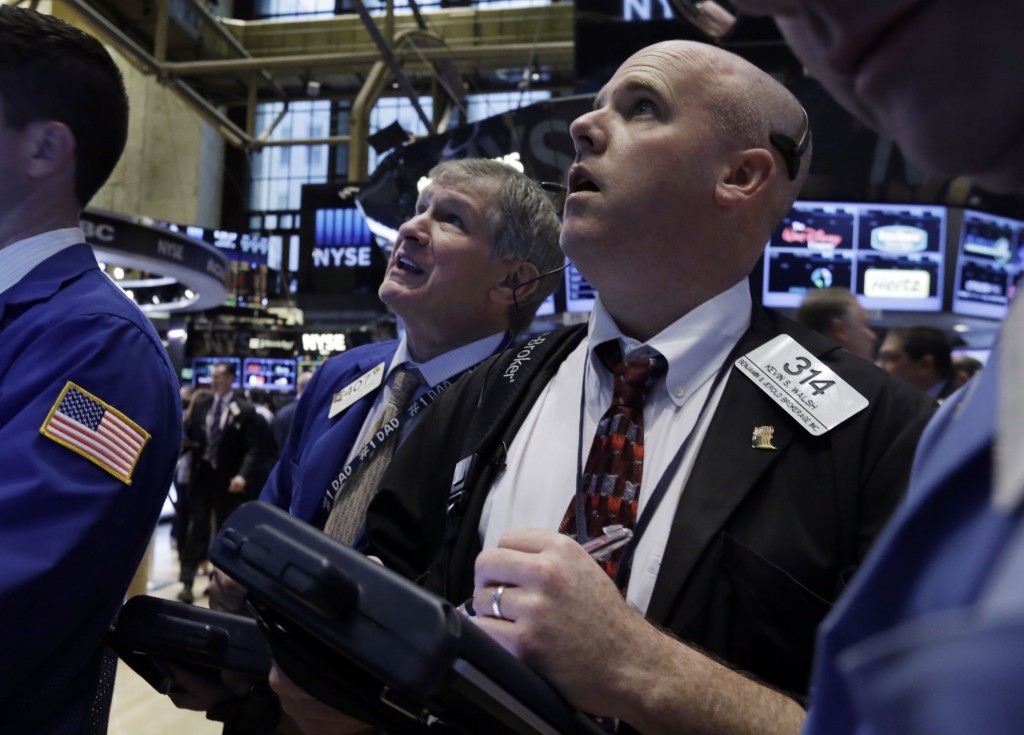- California Assembly OKs highest minimum wage in nation
- S. Korea unveils first graphic cigarette warnings
- US joins with South Korea, Japan in bid to deter North Korea
- LPGA golfer Chun In-gee finally back in action
- S. Korea won’t be top seed in final World Cup qualification round
- US men’s soccer misses 2nd straight Olympics
- US back on track in qualifying with 4-0 win over Guatemala
- High-intensity workout injuries spawn cottage industry
- CDC expands range of Zika mosquitoes into parts of Northeast
- Who knew? ‘The Walking Dead’ is helping families connect
Economists forecast fast growth in 2015

The U.S. economy should enjoy the fastest economic growth in a decade this year, according to a panel of top business economists. (AP)
WASHINGTON (AP) — The U.S. economy, helped by a stronger job market and falling oil prices, should enjoy the fastest economic growth in a decade this year, according to a panel of top business economists.
The National Association for Business Economics said it expects the overall economy, as measured by the gross domestic product, to expand by 3.1 percent in 2015. That would be the strongest GDP growth since 2005 when the economy grew 3.3 percent.
The 2007-2009 recession was the worst downturn since the 1930s, and the economy has struggled to regain its footing. The U.S. has been stuck with sub-par growth averaging 2.2 percent per year. The NABE forecasters believe growth this year will average an anemic 2.2 percent, matching last year’s performance.
But the NABE forecasting panel, composed of 48 economists, believes growth will finally move into higher gear next year, reflecting continued job gains and a boost in consumer spending linked to the recent big drop in energy prices. The 3.1 percent forecast for 2015 is up slightly from a 3 percent projection the NABE panel made in September.
The government reported last month that the economy created 321,000 jobs in November, the most in nearly three years. The country was on track to see the largest annual gain in jobs since 1999. More people working means more incomes and higher consumer spending, which accounts for about 70 percent of economic activity.
NABE President John Silvia, the chief economist at Wells Fargo, said NABE is also forecasting that inflation will remain restrained in 2015 with various measures remaining below the Federal Reserve’s 2 percent target for price increases. The panel projected that the annual increase in consumer prices will hold steady at 1.7 percent this year, the same as what was expected for last year. The modest inflation means that Fed policymakers will have leeway to keep interest rates lower for longer.
Members of the forecasting panel pushed back their expectation for the first hike in the Fed’s key short-term interest rate, which has been near zero for six years.
Now, 46 percent of the NABE panelists think the first Fed rate hike won’t happen until the July-September quarter this year, up from 26 percent who targeted that period before. Those who think a rate hike could still occur in the April-June period dropped to 30 percent, down from 43 percent in the previous NABE forecast in September.
When the Fed does start raising rates, the panelists expect gradual increases, putting the short-term rate at just 0.75 percent by the end of 2015.
The panelists see a continuation of the gap between an improving U.S. economy and growing weakness abroad. More than half of the panelists — 54 percent — believe the world’s developed economies are mired in “secular stagnation,” a prolonged period of sub-trend growth.
While forecasting 3.1 percent U.S. growth, the NABE panelists projected much weaker in Europe and Japan. It forecast 1 percent growth in Japan and 1.2 percent growth in the European Union. China’s growth was put at 7 percent for this year.















